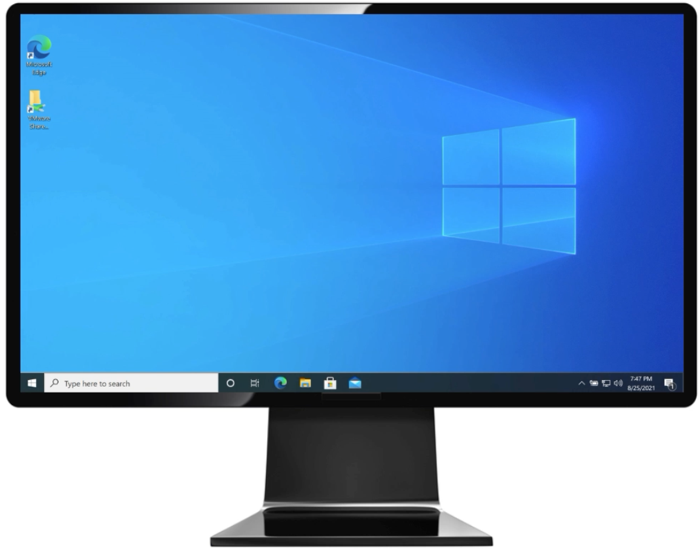Authenticating using PingID desktop app
Use PingID desktop app to generate a one-time passcode (OTP) that you can use to authenticate securely to access your account, app, VPN, or Windows login machine through Remote Desktop Protocol (RDP).
Before you begin
-
Download PingID desktop app and then pair your device with your account to enable authentication (see Using PingID desktop app authentication).
About this task
If your organization allows it, you can authenticate PingID desktop app to access your account using a web browser, to access your company’s VPN, or to access a Windows login machine using RDP.
-
Web
-
VPN
-
Windows login using RDP
Authenticating using the PingID desktop app (Web)
Authenticate using the PingID desktop app.
Before you begin
You must pair the PingID desktop app with your account. For more information, see:
Steps
-
Sign on to your account or access an application that requires authentication.
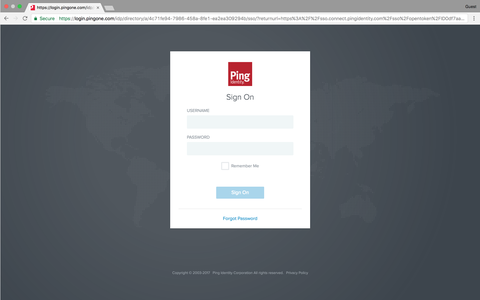
Result:
The Authentication window opens, prompting you to enter a OTP.

-
In the Authentication window, enter the OTP that displays in your PingID desktop app. Click Sign On to launch the PingID desktop app.
Result:
If more than one profile exists on PingID desktop app, all profiles are displayed. If your organization requires you to enter a PIN code, the Locked window displays, prompting you to enter a PIN.
-
If the PingID desktop app has more than one profile, select your profile, otherwise skip this step.
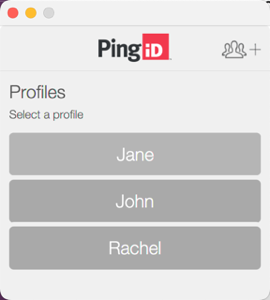
-
If the Locked window displays and you are prompted to enter a PIN code, enter the PIN code and then click Next, otherwise skip this step.
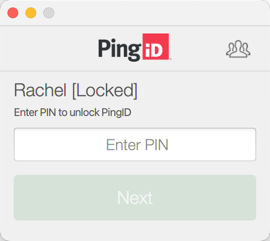
Result:
The PingID desktop app displays an OTP.
-
Click Copy to copy the OTP and paste it into the Authentication window.
Ensure the browser window is the active window when pasting the OTP. You can only use an OTP once. Click Refresh to generate a new OTP, if required.
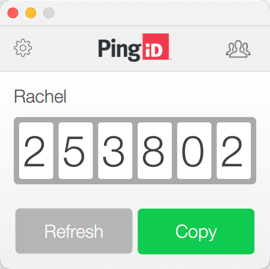
-
Click Sign On.
Result:
The green Authenticated message with a checkmark appears, indicating your authentication is successful, and your access is approved.
Authenticating using the desktop app (VPN)
After you setup the PingID desktop app authentication for web, use the desktop app to generate a OTP to use to authenticate with a VPN.
About this task
Use the PingID desktop app to authenticate for web with a VPN.
Steps
-
From your web browser or application sign on to your VPN:
-
Enter your username and password.
-
Click Sign In.
Result:
For multiple devices only: a message displays all of your devices in a numbered list.
-
Enter the number for the PingID desktop app and then click Sign In.
-
-
Launch the PingID desktop app.
Result:
A passcode generates.
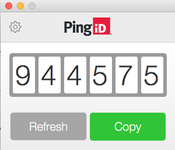
-
In the blank field, enter the OTP and then click Sign In.
Result:
After you successfully authenticate, your browser is redirected to your VPN.
Authenticating using the desktop app (Windows login)
Authenticate using the PingID desktop app to access a Windows machine that requires PingID multi-factor authentication (MFA).
About this task
|
To authenticate for your Windows machine, set up the PingID desktop app on a different machine from the Windows machine you are accessing. |
Steps
-
Sign on to your Windows machine either locally or remotely using an RDP.

Result:
The Authentication window appears, prompting you to enter a passcode.
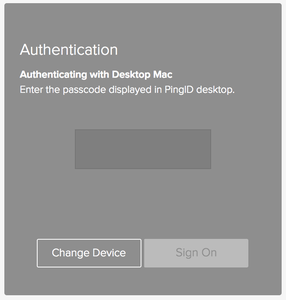
-
Launch the PingID desktop app from a local machine.

Result:
The PingID app generates a passcode.
-
On the Windows machine, in the Authentication window, enter the passcode. Click Sign On.
Result:
The green check mark appears, indicating successful authentication. You are signed on to your Windows machine.
